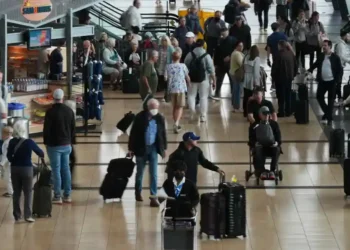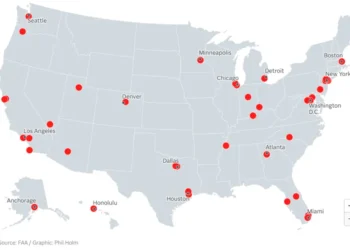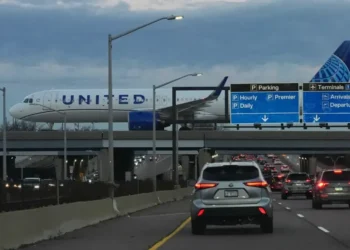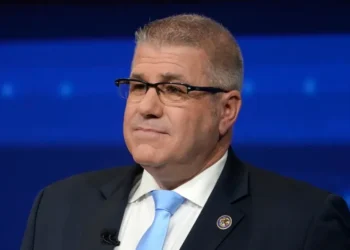States Push for Speed-Limiting Devices to Combat Dangerous Driving
In a tragic accident near Seattle, teenager Chase Daniel Jones, who admitted to being “addicted to speed,” crashed into a minivan at 112 mph, killing the driver and three of the five children she was transporting. The crash, which occurred in March 2024, has sparked a nationwide conversation about how to curb reckless driving, particularly among habitual speeders.
Jones, who had previously totaled two cars in less than a year, was sentenced to over 17 years in prison. As part of his sentence, a judge required that any future vehicle Jones drives must be equipped with a device that limits his speed. This decision marks a new phase in how the U.S. is addressing dangerous drivers, with Virginia becoming the first state to adopt such technology as part of a broader effort to keep the roads safer.
The Push for Speed-Limiting Technology
This new approach is gaining traction in several states. Virginia has already passed legislation allowing judges to mandate speed-limiting devices for habitual offenders, while Washington, D.C., has already implemented the technology. Now, states like Washington and Georgia are preparing to adopt similar measures. New York and California may soon follow suit, as the U.S. grapples with a recent surge in traffic deaths.
Amy Cohen, whose son was tragically killed by a speeding driver in 2010, is among those advocating for change. She founded Families for Safe Streets to support victims of speeding-related crashes and has long pushed for stronger safeguards to prevent similar tragedies.
Turning Tragedy Into Action
The recent crash in Washington state, where minivan driver Andrea Hudson and three children lost their lives, has fueled legislative efforts. Hudson was working on a backyard greenhouse with her husband to educate kids in her community, including those who tragically lost their lives in the crash. Hudson’s two surviving children spent weeks in the hospital following the collision.
“I never thought something like this could happen to me. But when it does, it’s a horror no one should ever experience,” said Ted Smith, Hudson’s father. He later connected with Washington state Rep. Mari Leavitt, who introduced a bill to mandate speed-limiting devices for repeat speeders as a condition for reinstating their suspended licenses. Leavitt believes that this approach will be more effective than simply revoking licenses, noting that studies show many who lose their licenses continue to drive illegally.
Between 2019 and 2024, Washington state saw a 200% increase in drivers cited for going 50 mph or more over the speed limit, according to the Washington Traffic Safety Commission. Leavitt hopes the new law will help curb this dangerous trend.
The BEAM Act: A New Model for Road Safety
Washington state’s new bill, the BEAM Act, was passed in memory of the four victims of the March 2024 crash—Buster, Eloise, Andrea, and Matilda. Once signed into law, it will require some offenders to install devices that prevent their vehicles from exceeding certain speeds, thus promoting safer driving habits.
Though Jones’ prior crashes didn’t result in speeding tickets, this new law would have required a speed-limiting device if it had been in place earlier. The law isn’t set to take effect until 2029, but the judge’s order applies during his probation, ensuring that Jones won’t have access to a vehicle without the device during that time.
A Technological Solution to Speeding
The technology behind speed-limiting devices has evolved significantly over the years. Initially used for fleet vehicles like school buses, the devices now use GPS to recognize speed limits and adjust the vehicle’s speed accordingly. This ensures that drivers cannot exceed legal limits, although some models allow for emergency overrides if needed.
In the European Union, a similar technology is required in new vehicles, alerting drivers when they are speeding. In California, Governor Gavin Newsom vetoed a proposal for similar requirements, citing concerns about conflicting state laws. However, advocates believe that the benefits of these devices—especially when mandated by the courts—outweigh potential challenges.
The Impact of Slowing Down Speeders
Before Del. Patrick Hope of Virginia sponsored the legislation for speed-limiting devices, he personally tested one in a car. The device, which prevents the car from exceeding 9 mph over the speed limit, convinced Hope of its safety and effectiveness. Now, he’s considering installing one in the vehicles of his own teenage children.
While the cost for offenders required to install the device could be as high as $4 per day with a $100 installation fee, advocates argue that the investment is worth the safety benefits.
Amy Cohen, who lost her son to a speeding driver, knows firsthand the difference that slowing down can make. After advocating for a lower speed limit on her street, Cohen saw another child survive a crash in the same location—a powerful reminder of how reducing speed can save lives.
A Future of Safer Roads
As states like Virginia, Washington, and Georgia take the lead in implementing speed-limiting technology, the hope is that it will spread nationwide, turning the tragedy of lives lost into a movement for road safety. With the support of families affected by speeding-related deaths, advocates are determined to make the streets safer for everyone.
This article was rewritten by JournosNews.com based on verified reporting from trusted sources. The content has been independently reviewed, fact-checked, and edited for accuracy, neutrality, tone, and global readability in accordance with Google News and AdSense standards.
All opinions, quotes, or statements from contributors, experts, or sourced organizations do not necessarily reflect the views of JournosNews.com. JournosNews.com maintains full editorial independence from any external funders, sponsors, or organizations.
Stay informed with JournosNews.com — your trusted source for verified global reporting and in-depth analysis. Follow us on Google News, BlueSky, and X for real-time updates.













